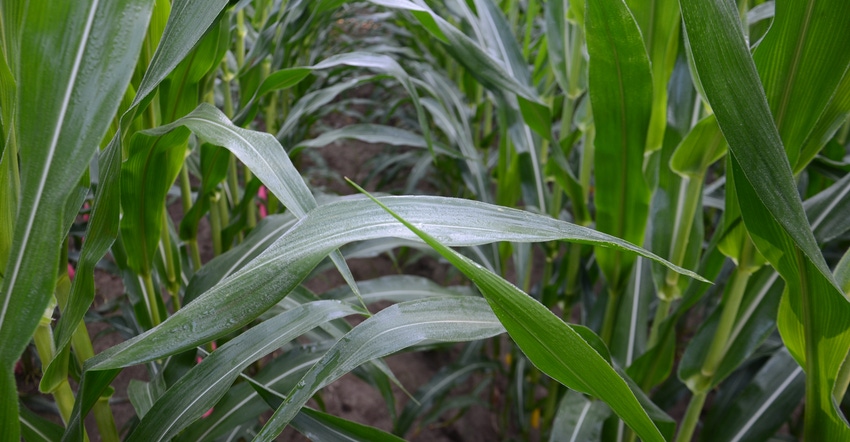
Everyone recognizes the axiom “April showers bring May flowers.” How about a new saying? “July and August sunshine bring big October corn yields.”
Bob Nielsen, a Purdue Extension corn specialist, contends that in years with more cloudy days than normal, especially in July and August, corn yields will be lower than if there is ample sunshine. Dan Emmert, a Pioneer field agronomist, led a demonstration project recently that seems to back up that claim.
Working in a field near Montgomery, Ind., researchers devised a movable shade structure that could cover 12 rows of corn at once. The structure reduced solar radiation by about 70%. It was first put in place at the V13 growth stage and left in place until about 320 growing degree days accumulated. Then it was moved to other plots.
The net result was that corn was shaded beginning at five different times: from V13 to VT, from VT to R2, from R2 to R3, during R4 and during R5. Start dates for the five shade treatments were June 17, July 3, July 15, July 30 and Aug. 14, respectively.
The theory
Solar radiation, better known as sunshine, is as essential for crop growth and yield as water and nutrients. If you restrict it, yield will be affected, Emmert says.
Other studies have shown that photosynthetically active radiation, known as PAR, can be reduced by as much as 60% on cloudy, rainy days. Even if there’s enough moisture and the temperature is 86 degrees F or less, the missing link is sunshine. Other sources indicate that extended periods of reduced solar radiation during grain fill, like several cloudy days in a row, reduce yield and lead to weaker stalks.
Emmert decided to conduct a demonstration to see if these impacts that others talk about would show up. Here is what he found:
Fewer kernels. When plants were shaded before R3, Emmert found they produced fewer kernels per row.
Pollination failure. A 70% reduction in solar radiation during pollination resulted in near-total pollination failure.
Kernel abortion. Shade during R2 and R3 caused kernels near the tip that were successfully pollinated to abort. With reduced solar radiation, plants weren’t able to produce enough photosynthates to fill all the kernels.
Kernel weight. When shade didn’t occur until R4 and R5, number of kernels wasn’t affected. However, kernel weight was reduced.
Pre-pollination shading. Total number of kernels dropped, but maximum kernel weight occurred in these plots. There was no dip in solar radiation during grain fill.
Weaker stalks. Shading during R4 and R5 reduced kernel weights and resulted in stalk cannibalization and weaker stalks.
Yield impact. Yield losses for shading starting at V13, VT, R2, R4 and R5 were 38%, 82%, 54%, 51% and 21%, respectively.
“Stress at different stages affects ear development,” Emmert says. “If yields are off, look at ears at harvest and determine when stress reduced yield.”
About the Author(s)
You May Also Like




